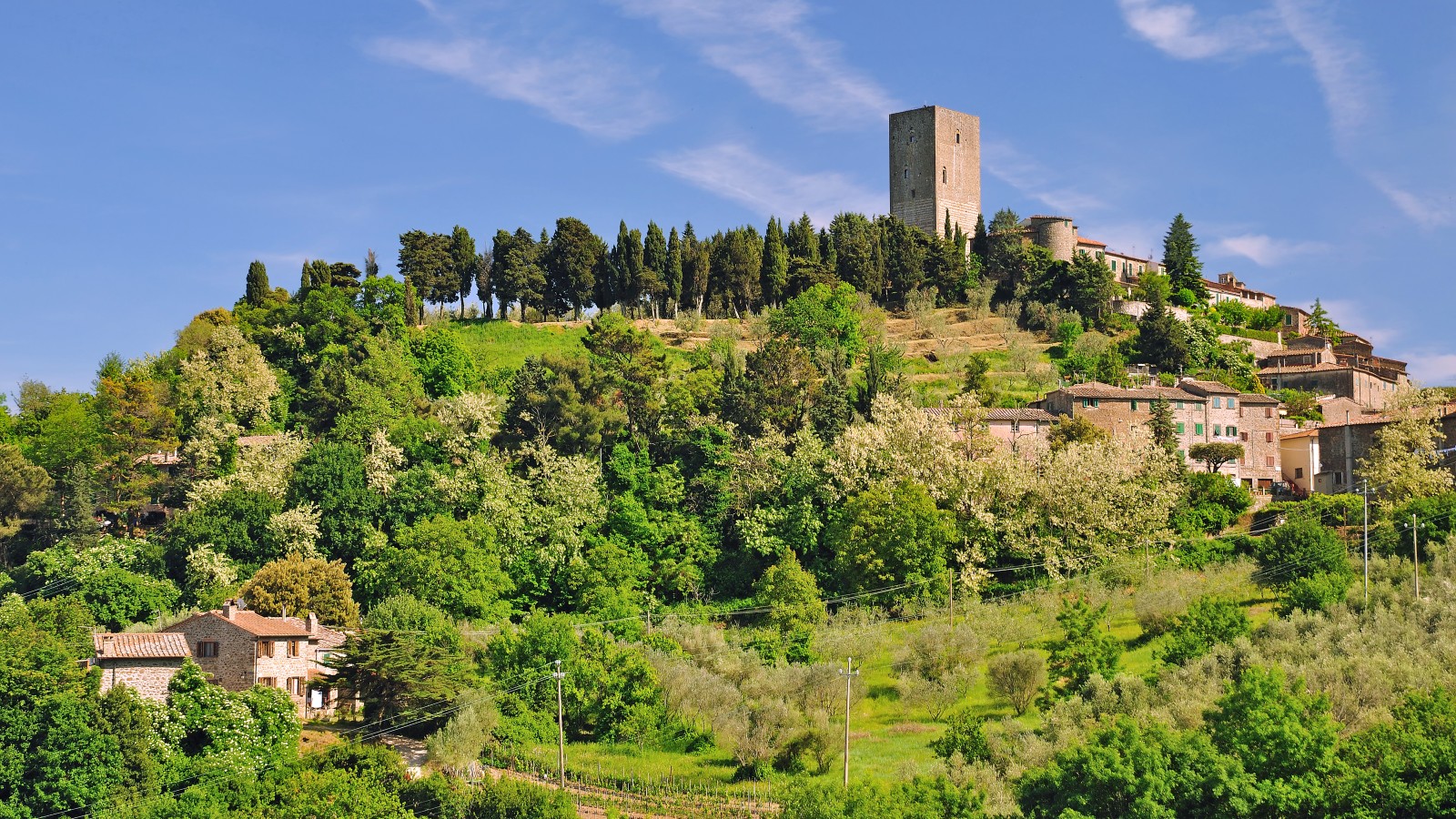Montecatini Alto, a panoramic terrace over the Valdinievole


Due to the hilly nature of the route, it is quite challenging for those using muscle bikes, but the beauty of the Tuscan landscape, among olive groves and ancient villages, will be the reward for our efforts. All along the way we will encounter typical restaurants and on-farm tourism that will allow us to take a break and admire the landscape, savoring Tuscan cuisine.
From the very center of town in Piazza del Popolo, we head toward Montecatini Alto, which stands out from above Viale Verdi; moving along the avenue, we turn right into Via Grocco and then immediately left into Via Diaz, crossing the Terme Regina and the Funiculare railway station which, since 1898, still allows a comfortable ascent to the village.
We turn right at the traffic light to join the lightly trafficked State Highway 633 for about 3 kilometers with a 5% ascent. When we reach the junction in the road (at the Osteria al Bivio) we continue straight on in the direction of Montecatini Alto, for an experience that we cannot miss for both sight and palate. Montecatini Alto is a village of Roman origin, perfectly preserved with its medieval symbols: the Rocca, the Torre del Mastio, the Palazzo del Podestà, and the Torre dell'Orologio. Its square, the hub of tourist life, is lively thanks to the presence of restaurants, places to drink and eat outdoors on fine days. The scenery here is enchanting and endless on hills, olive groves and the entire Valdinievole.
Satisfied by so much beauty, we return to the crossroads to rejoin State Road 633 in the direction of Marliana; after a few kilometers uphill, we turn left and take Via del Casorino, a 3,3-kilometer descent, without difficulty, surrounded by greenery that leads us to the junction with Via Collegiana; Turning right, we continue for 2,3 kilometers uphill towards Massa e Cozzile, another medieval village at an altitude of about 220 meters, beyond which we reach, via Provincial Road 29 Collegiana, the village of Colle di Buggiano with its Pieve di San Lorenzo and bell tower located right at the end of the paved square. Also along the road is the Oratorio di San Giovanni Evangelista reconstructed in 1766 and intended for the company of the same name. The building is now deconsecrated and can only be visited externally, but often the front lawn is enlivened by village festivals that more than any other experience can take you straight into the local culture and traditions. Needless to say, you find yourself surrounded by hills and gentle slopes with terraces planted with olive groves and stretches of shady woods.
Continuing downhill, the Collegiana provincial road skirts Buggiano Castello: the village is rich in "urban" gardens and vegetable gardens, inserted within the city walls and born from the medieval tradition of the "hortus conclusus" of the monks. Thanks to the climate that allows citrus trees to grow, it is also known as the village of citruses. Buggiano Castello is an exclusive and very scenic village thanks to its buildings colored with the characteristic Buggiano Red. The village is worth a stop.
We leave again through via Collegiana, via Borgo a Buggiano as far as the crossroads on the left with via Battisti and from there through the Piazza del Mercato dei Foraggi. We continue along Via Caduti di Tutte le Guerre until we join the Lucchese Provincial Road, which leads us without ever turning toward the center of Montecatini, once we pass by the traffic light located at the intersection with Viale dei Martiri.